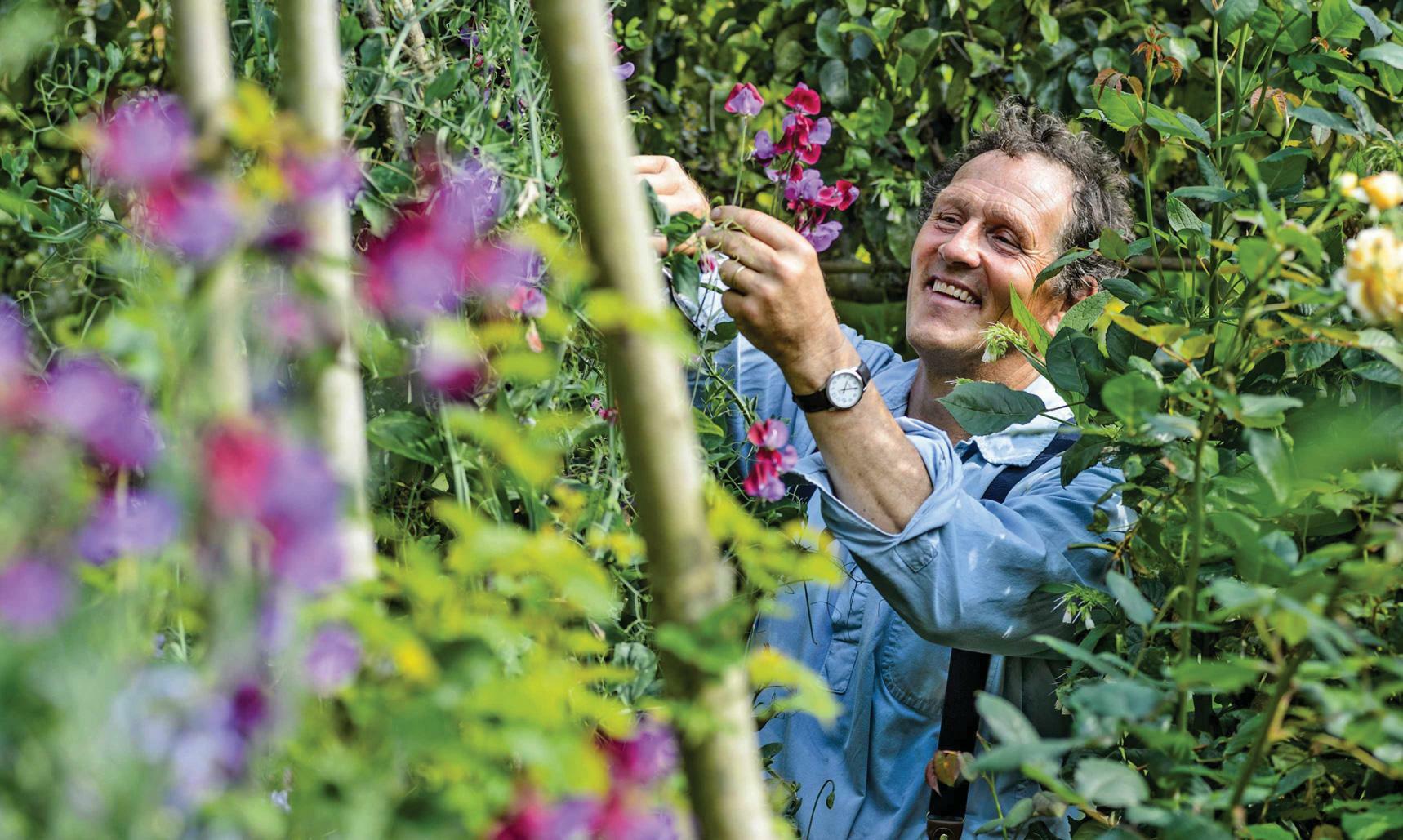Creative cottage style
June 2023
|BBC Gardeners World
Cottage gardens tap into an age-old tradition that merges crops with flowers for an atmosphere that's both romantic and casual. Learn how to create your own as Monty shares his wisdom from Longmeadow

In 2013 we decided to transform the vegetable garden into a cottage garden. With its formality it is, 'old' perhaps, more like a potager. Perhaps I should call it the Cotager or Pottage Garden? But, by any name, the jumble of decorative and edible plants is absolutely true to the very British tradition of the cottage garden.
Cottage gardens evolved around the homes of the rural poor, living in tied cottages with scraps of land where they could supplement their diets by growing some vegetables. Occasionally a flower was allowed to enter into this utilitarian mix, which clearly illustrates that you cannot bury the human spirit.

What has filtered down into gardening culture, however, is something more carefree; a loose, informal style of gardening identified with rural charm and a sense of harmonious abandonment. Added to this is playfulness with topiary. I am not quite sure when topiary - not neat cones and balls but the large, fanciful yew topiary that one still joyfully sees incorporated into cottage hedges - was taken up in cottages, but it expresses a freedom of spirit and pride that I love. My Irish yews nod in that direction.

What is certainly true to the original cottage gardens is the absence of lawn. Every square inch was traditionally devoted to growing something that was either edible or beautiful. Lawns implied leisure and of that there was none other than exhausted sleep. Cottage life may have been simple and even unstressful by modern standards but it was never less than hard.
هذه القصة من طبعة June 2023 من BBC Gardeners World.
اشترك في Magzter GOLD للوصول إلى آلاف القصص المتميزة المنسقة، وأكثر من 9000 مجلة وصحيفة.
هل أنت مشترك بالفعل؟ تسجيل الدخول
المزيد من القصص من BBC Gardeners World

BBC Gardeners World
Winter wildlife watching
Love watching wildlife in your garden? Even in winter there are plenty of ways to observe and appreciate birds, insects, pond life and even some small mammals if you're lucky.
4 mins
December 2025

BBC Gardeners World
Garden globetrotting: The Dolomites
For a mountain holiday with a difference, Catherine Mansley found that South Tyrol offers something for all the family to enjoy, including gardens and plants galore
2 mins
December 2025

BBC Gardeners World
The Full Monty
Changes are afoot in the hazel coppice at Longmeadow - Monty reveals the reasons behind this bold step and outlines his new vision for this area
3 mins
December 2025

BBC Gardeners World
Expert's choice Variegated hollies
When it comes to sex, holly names are confusing, but get it right and you'll get berries galore,
1 mins
December 2025

BBC Gardeners World
We love December
I have been trying to compose a hit Christmas single based loosely around gardens and gardening.
5 mins
December 2025

BBC Gardeners World
Get set for CHANGE
Winter is the perfect time to plan changes in your garden - Alan Titchmarsh looks at how to work out what to do and when, as he prepares for big changes himself
6 mins
December 2025

BBC Gardeners World
Root of the matter
Why winter is the best time to design your garden, including assessing and adding structure during peak planting time and finding the beauty in decay
3 mins
December 2025

BBC Gardeners World
Christmas at Longmeadow
With the festive season upon us, Monty shares his plans for Christmas at Longmeadow - read on for sprouts, mistletoe, Christmas trees and more.
4 mins
December 2025

BBC Gardeners World
Winter wanders
There's plenty to see in many of our 2 for 1 Gardens this month - here are just a few highlights to tempt you outside for an inspiring walk amid winter's crisp beauty
2 mins
December 2025

BBC Gardeners World
Starting over
In the final part of his series, Nick Bailey shows you how plants can bring a new garden design together
3 mins
December 2025
Translate
Change font size

